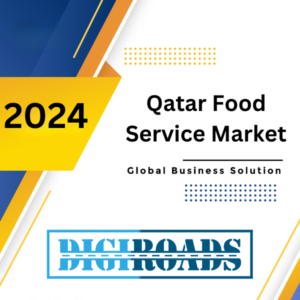Description
Middle East Poultry Meat Market: Opportunity Analysis and Industry Forecast, 2024-2034
Middle East Poultry Meat Market Overview:
The Middle East Poultry Meat Market is to reach USD 16.10 billion in 2024 and grow at a CAGR of 2 % to reach USD 17.63 billion by 2034.
The Middle East Poultry Meat Market is a significant segment of the region’s food industry, characterized by steady growth and high demand. Poultry meat, including chicken and turkey, is a staple protein source for Middle Eastern consumers due to its affordability, versatility, and perceived health benefits. This market is influenced by various factors, such as population growth, urbanization, and changing dietary preferences.
Key drivers of growth in the Middle East Poultry Meat Market include an increasing population with rising disposable incomes, urbanization leading to a more hectic lifestyle favoring quick and easy meal options, and a growing awareness of the health benefits associated with poultry consumption. Moreover, poultry meat is often perceived as a healthier alternative to red meat, aligning with the region’s shifting dietary preferences towards healthier options.
The market is also impacted by cultural and religious considerations, as halal poultry meat is in high demand due to the region’s predominantly Muslim population. This market segment offers opportunities for both local and international poultry producers, with a focus on ensuring high quality, halal-certified products. As a result, major players are investing in production facilities and distribution networks to meet the increasing demand for poultry meat in the Middle East. Overall, the Middle East Poultry Meat Market presents a lucrative opportunity for growth and innovation within the region’s food industry.
Middle East Poultry Meat Market – Report Coverage:
The “Middle East Poultry Meat Market Report – Forecast (2024-2034)” by Digiroads Consulting, covers an in-depth analysis of the following segments in the Middle East Poultry Meat Market.
| Attribute | Segment |
| By Product Type |
|
| End Use |
|
| By Distribution Channel |
|
| By Processing Type |
|
| By Nature |
|
| By Location |
|
Recent Developments :
Increased Local Production:
- Saudi Arabia remains the dominant producer, reaching over 60% self-sufficiency in 2022, driven by expansion of facilities from companies like Al Watania Poultry Farms.
Rising Production Costs:
- The cost of poultry feed and other inputs is increasing, leading to a slight rise in poultry prices across the region (around 0.92% in 2022).
Price Discrepancy and Government Intervention:
- Chilled, locally produced chicken is more expensive and primarily consumed domestically due to preference for freshness.
- Imported, frozen chicken is cheaper but may be less preferred by some consumers.
- Some governments, like the UAE, have implemented price controls to make poultry more affordable.
Focus on Sustainability:
- There’s a growing interest in environmentally friendly practices within the poultry industry. This could lead to increased adoption of sustainable feed sources and waste management solutions.
Evolving Consumer Preferences:
- Consumers are becoming more health-conscious, potentially driving demand for organic or antibiotic-free chicken options, although this segment is still in its early stages.
- The popularity of ethnic cuisines continues to influence the demand for a wider variety of poultry cuts and marinades.
Potential for E-commerce Growth:
- Online grocery shopping is becoming more prevalent in the Middle East, offering increased convenience and potentially facilitating access to a wider range of poultry products, including organic options.
Middle East Poultry Meat Market – Dynamics:
Growth Drivers:
- Rising Protein Demand: Population growth and increasing disposable incomes are fueling the demand for protein sources like chicken, considered affordable and versatile.
- Improved Local Production: Governments are prioritizing self-sufficiency in poultry production, with Saudi Arabia leading the way. This translates to increased availability and potentially lower prices for domestically produced chicken in the long run.
- Shifting Dietary Habits: Urbanization and a growing youth population are embracing convenience foods like processed poultry products, contributing to market growth.
Challenges and Considerations:
- Cost Pressures: Rising feed and operational costs are pushing poultry prices upwards, potentially impacting affordability for some consumers.
- Price Discrepancy: Chilled, locally produced chicken carries a premium compared to cheaper, imported frozen options. This creates a two-tiered market based on consumer preferences and government intervention through price controls.
- Sustainability Concerns: Environmental awareness is prompting interest in sustainable practices like eco-friendly feed sources and responsible waste management. This could add some cost pressures but cater to a growing niche.
Evolving Consumer Preferences:
- Health Consciousness: Consumers are becoming more health-conscious, potentially driving demand for organic or antibiotic-free chicken options, though this segment is still nascent.
- Ethnic Cuisines: The increasing popularity of ethnic cuisines is influencing demand for a wider variety of poultry cuts and marinades.
- E-commerce Growth: The rise of online grocery shopping offers convenience and potentially facilitates access to a wider range of poultry products, including organic options, in the future.
Key Market Players:
Product/Service launches, approvals, patents and events, acquisitions, partnerships and collaborations are key strategies adopted by players in the Middle East Poultry Meat Market . The top 10 companies in this industry are listed below:
- Al-Watania Poultry
- Almarai Food Company
- Arabian Agricultural Services Company
- BRF S.A.
- Emirates National Food CC LLC
- JBS SA
- Tanmiah Food Company
- The Savola Group
- Siniora Food Industries Company
- Sunbulah Group
Growth Drivers:
- Rising Protein Demand: Population growth and increasing disposable incomes are fueling demand for affordable protein sources like chicken.
- Improved Local Production: Governments are prioritizing self-sufficiency, leading to increased availability of domestic chicken.
- Shifting Dietary Habits: Growing preference for convenience foods like processed poultry products is contributing to market growth.
Challenges:
- Cost Pressures: Rising feed and operational costs are pushing poultry prices upwards.
- Price Discrepancy: Chilled, local chicken is more expensive than imported, frozen options.
- Sustainability Concerns: Balancing affordability with environmentally friendly practices.
Consumer Trends:
- Health Consciousness: Potential for growth in organic or antibiotic-free chicken options.
- Ethnic Cuisines: Demand for a wider variety of poultry cuts and marinades due to the popularity of ethnic cuisines.
- E-commerce Growth: Online grocery shopping could facilitate access to a wider range of poultry products in the future.
Country-wise Insights
Country-wise Insights: Middle East Poultry Meat Market
The Middle East poultry meat market presents a diverse landscape with various growth drivers, challenges, and consumer preferences across different countries. Here’s a peek into some key countries:
Saudi Arabia:
- Dominant Producer: The leader in poultry production within the region, accounting for over 60% self-sufficiency and boasting major players like Al-Watania Poultry.
- Focus on Local Production: Government initiatives and expanding facilities are driving domestic production to meet demand and potentially reduce reliance on imports.
- Consumer Preferences: A preference for fresh, chilled chicken exists, but rising costs may lead to a shift towards frozen options. There’s also a nascent interest in health-conscious options like organic chicken.
United Arab Emirates (UAE):
- Limited Domestic Production: Relies more heavily on imports compared to Saudi Arabia. The UAE has a growing population and high demand for poultry meat.
- Rising Demand for Convenience: Urbanization and busy lifestyles are fueling the demand for processed poultry products.
- Price Sensitivity: Consumers in the UAE are price-conscious, and the affordability of frozen chicken is a significant factor. Government intervention through price controls is also present.
Iran:
- Growing Popularity of Poultry: Ethnic cuisines featuring chicken are gaining traction, leading to increased consumption.
- Fluctuations in International Prices: Reliance on imports makes the market susceptible to global poultry price swings.
- Potential for Self-Sufficiency: Government efforts to boost domestic production are underway, but progress is ongoing.
Egypt:
- Rising Disposable Incomes: As disposable incomes increase, protein consumption, including chicken, is expected to rise.
- Subsidy Programs: Government subsidies can impact market stability and potentially distort consumer preferences.
- Focus on Affordability: Price is a major concern for Egyptian consumers, and locally produced chicken is often the most affordable option.
Category-wise Insights
- Fresh Poultry Meat:
- Market Leader: This category dominates the market due to the preference for fresh chicken, particularly whole chickens and popular cuts like breasts and thighs.
- Consumer Preference: Freshness is a key selling point, especially in Saudi Arabia and other countries with a cultural emphasis on fresh ingredients.
- Challenges: Maintaining a cold chain for fresh chicken can be challenging in some regions, leading to spoilage and short shelf life.
- Processed Poultry Products:
- Growing Segment: Driven by busy lifestyles and the popularity of convenience foods, processed poultry products like marinated chicken, sausages, and nuggets are gaining traction.
- Urbanization Factor: Urban populations often have less time for elaborate cooking, making processed poultry a convenient option.
- Innovation Potential: This segment offers opportunities for companies to introduce new flavors and varieties catering to different ethnic preferences.
- Value-Added Poultry Products:
- Evolving Segment: This category includes pre-marinated, pre-cooked, and organic chicken options.
- Health Consciousness: The demand for organic or antibiotic-free chicken is still nascent but has potential for growth as health awareness increases.
- Convenience Factor: Pre-marinated and pre-cooked options offer convenience and cater to busy consumers willing to pay a premium for ease of preparation.
Here’s a table summarizing the key insights for each category:
| Category | Market Share | Consumer Preference | Challenges | Growth Potential |
| Fresh Poultry Meat | Dominant | Freshness | Maintaining cold chain | Limited |
| Processed Poultry Products | Growing | Convenience | Competition, innovation needed | High |
| Value-Added Poultry Products | Evolving | Health & Convenience | Price premium, consumer awareness | Moderate |
Key Benefits For Stakeholders:
- Producers and Suppliers:
- Increased demand for poultry meat leads to higher production and sales volumes.
- Halal certification opens up access to the Muslim-majority market in the region.
- Opportunities to innovate and introduce new products to meet evolving consumer preferences.
- Retailers and Distributors:
- Poultry meat’s popularity drives footfall and sales in retail outlets.
- Diverse product offerings cater to a wide range of consumer preferences.
- Collaboration with producers for exclusive or premium poultry products enhances market competitiveness.
- Food Service Providers:
- Cost-effective protein source for menu items, appealing to health-conscious consumers.
- Versatile ingredient for various dishes, from fast-food to fine dining.
- Reliable supply chain ensures consistent availability for restaurants and catering services.
- Consumers:
- Affordable and nutritious protein source, meeting dietary needs.
- Diverse product range offers choices for different tastes and preferences.
- Halal-certified options align with cultural and religious considerations.
- Investors:
- Growth potential in a market driven by population growth and increasing disposable incomes.
- Diversification opportunities within the food industry.
- Long-term sustainability as poultry meat remains a staple in the Middle Eastern diet.
- Government and Regulatory Bodies:
- Economic growth and job creation in the poultry industry support national development goals.
- Halal certification standards ensure compliance with religious dietary requirements.
- Monitoring and regulation promote food safety and quality standards, benefiting public health.
These benefits highlight the significant opportunities and advantages for stakeholders involved in the Middle East Poultry Meat Market, ranging from producers to consumers and investors to regulatory bodies.
We have studied the Middle East Poultry Meat Market in 360 degrees via. both primary & secondary research methodologies. This helped us in building an understanding of the current market dynamics, supply-demand gap, pricing trends, product preferences, consumer patterns & so on. The findings were further validated through primary research with industry experts & opinion leaders across countries. The data is further compiled & validated through various market estimation & data validation methodologies. Further, we also have our in-house data forecasting model to predict market growth up to 2034.
Contact us for any inquiry.
Table of Contents
- INTRODUCTION
1.1 Study Assumptions & Market Definition
1.2 Scope of the Study
- RESEARCH METHODOLOGY
- EXECUTIVE SUMMARY
- MARKET DYNAMICS
4.1 Market Overview
4.2 Market Drivers
4.3 Market Restraints
4.4 Porter’s Five Forces Analysis
4.4.1 Bargaining Power of Suppliers
4.4.2 Bargaining Power of Buyers
4.4.3 Threat of New Entrants
4.4.4 Threat of Substitute Products
4.4.5 Intensity of Competitive Rivalry
- MARKET SEGMENTATION
- By Product Type:
- Chicken Meat
- Turkey Meat
- Duck Meat
- Others
- By End Use:
- Retail
- Food Service
- Others
- By Distribution Channel:
- Hypermarkets/Supermarkets
- Convenience Stores
- Specialty Stores
- Online Retail
- Others
- By Processing Type:
- Fresh Poultry Meat
- Frozen Poultry Meat
- Processed Poultry Meat
- By Nature
- By Location:
- UAE
- Saudi Arabia
- Qatar
- Oman
- Kuwait
- Bahrain
- Others
- COMPETITIVE LANDSCAPE
6.1 Most Adopted Strategies
6.2 Market Share Analysis
6.3 Company Profiles
- Al-Watania Poultry
- Almarai Food Company
- Arabian Agricultural Services Company
- BRF S.A.
- Emirates National Food CC LLC
- JBS SA
- Tanmiah Food Company
- The Savola Group
- Siniora Food Industries Company
- Sunbulah Group
- MARKET OPPORTUNITIES AND FUTURE TRENDS





